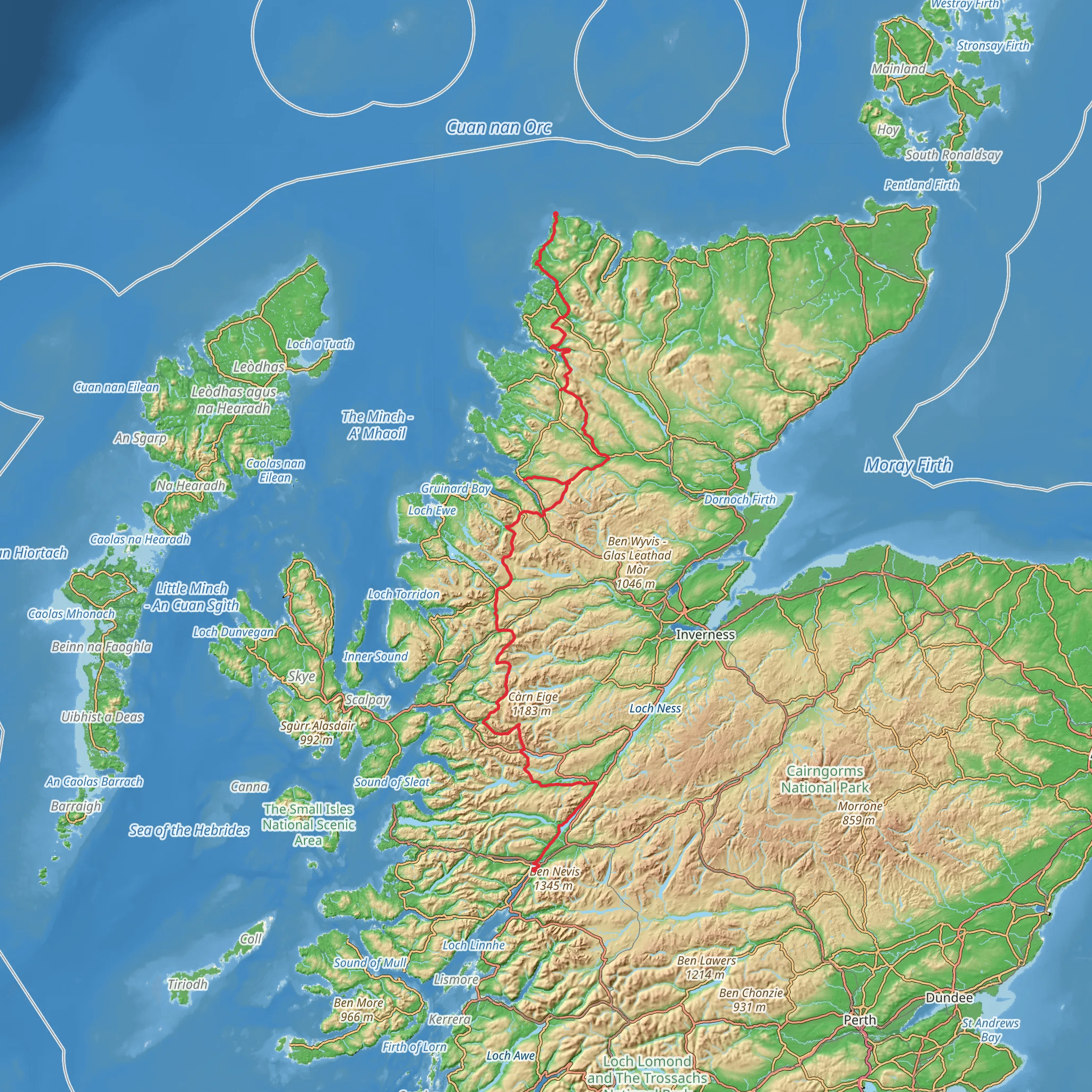Download
Preview
Add to list
More
370.9 km
~21 days
7177 m
Multi-Day
“Embark on the Cape Wrath Trail East for a rugged, unforgettable highland odyssey through Scotland's untamed wilderness.”
The Cape Wrath Trail East is a challenging and remote long-distance route that takes you through some of the most rugged and wild landscapes in the Scottish Highlands. Stretching approximately 371 kilometers (about 230 miles) with an elevation gain of around 7100 meters (approximately 23,300 feet), this trail is not for the faint-hearted but offers an unforgettable adventure for those who take it on.
Getting to the Trailhead The trailhead is located near Fort William in the Scottish Highlands, which is accessible by public transport or car. If you're traveling by train, the nearest station is Fort William, from which you can take a local bus or taxi to the starting point. For those driving, parking is available in Fort William, and from there, you can begin your journey to the trailhead.
Navigating the Trail As you embark on the Cape Wrath Trail East, it's essential to have a reliable navigation tool. HiiKER is an excellent resource for planning your route, as it provides detailed maps and GPS coordinates to ensure you stay on track. The trail is not officially waymarked, so having a digital map on hand is crucial.
Terrain and Scenery The trail takes you through a variety of landscapes, including deep glens, towering mountains, and along rugged coastlines. You'll traverse the foot of Ben Nevis, Britain's highest peak, and witness the beauty of the Knoydart Peninsula, often referred to as Britain's last wilderness. The path can be boggy and challenging in places, with river crossings that require careful navigation, especially after heavy rain.
Wildlife and Nature The Scottish Highlands are home to an array of wildlife. Keep an eye out for red deer, golden eagles, and if you're lucky, you might spot an otter along the riverbanks. The flora is equally impressive, with heather-clad hillsides and ancient Caledonian pine forests.
Historical Significance The region is steeped in history, with ancient ruins and castles dotting the landscape. You'll pass by remnants of the Highland Clearances and abandoned crofts, which tell a story of the area's turbulent past. The trail also takes you near the site of the Battle of Glencoe, a significant event in Scottish history.
Planning Your Hike Given the trail's length and remote nature, it's essential to plan your resupply points carefully. There are a few villages and bothies along the way where you can restock, but these are few and far between. It's advisable to carry enough food and supplies to last several days at a time.
Accommodation Wild camping is a popular option on the Cape Wrath Trail East, allowing you to immerse yourself fully in the Highland wilderness. There are also bothies and occasional guesthouses or inns for those seeking a bit more comfort, but these should be booked in advance due to limited availability.
Weather Considerations The weather in the Highlands can be unpredictable, with the potential for rapid changes. It's crucial to be prepared for all conditions, including rain, wind, and even snow in higher elevations, regardless of the season.
Safety and Preparedness Given the trail's remote nature, it's vital to be self-sufficient and prepared for emergencies. Carry a first-aid kit, know how to use a compass and map (or HiiKER's digital navigation tools), and inform someone of your itinerary. Mobile phone coverage can be patchy, so don't rely solely on it for communication.
Embarking on the Cape Wrath Trail East is an adventure that will test your endurance and reward you with some of the most spectacular and untouched scenery in Scotland. With careful planning and respect for the rugged terrain, hikers will find this trail to be a profoundly rewarding experience.
What to expect?
Activity types
Comments and Reviews
User comments, reviews and discussions about the Cape Wrath Way East, Scotland.
4.6
average rating out of 5
25 rating(s)

